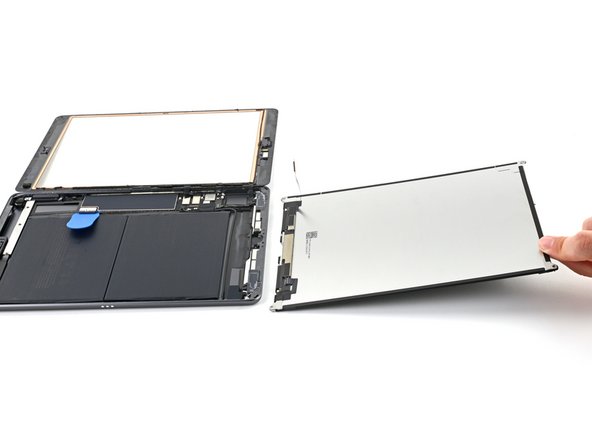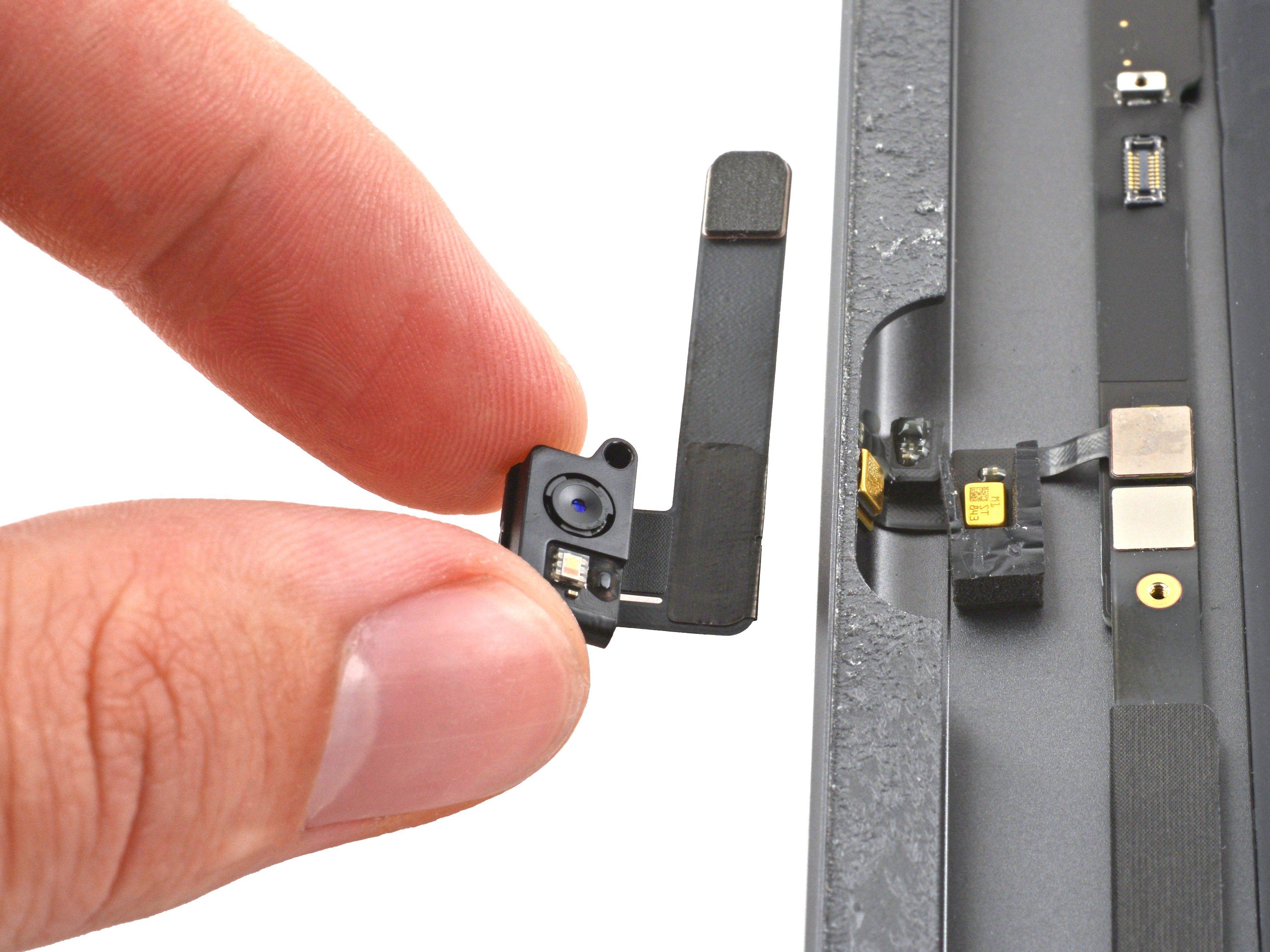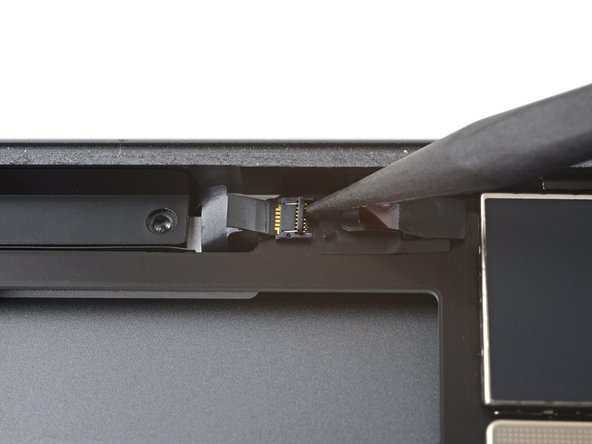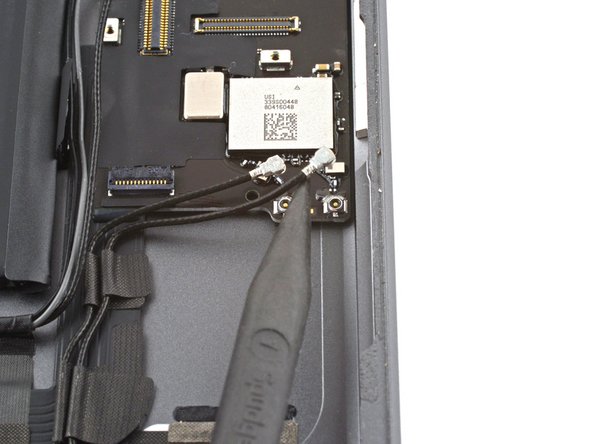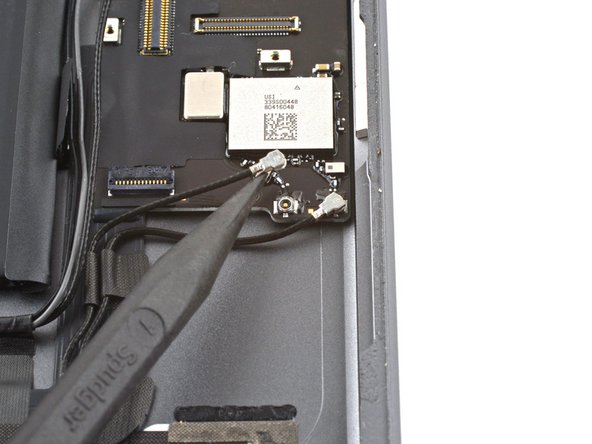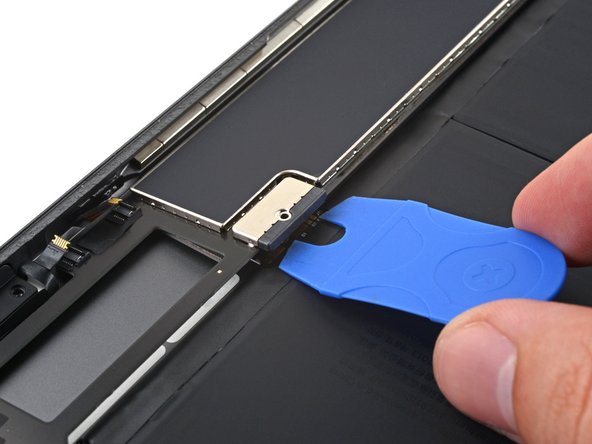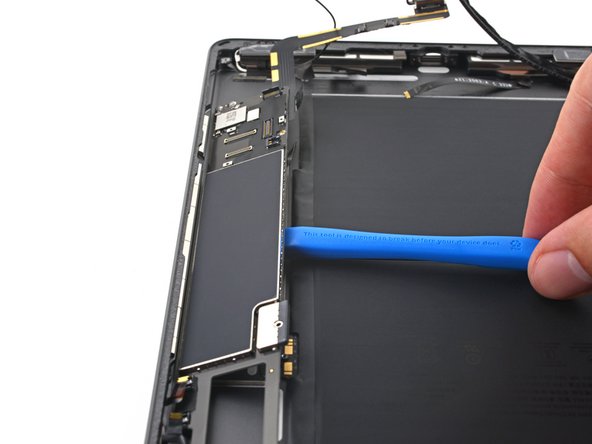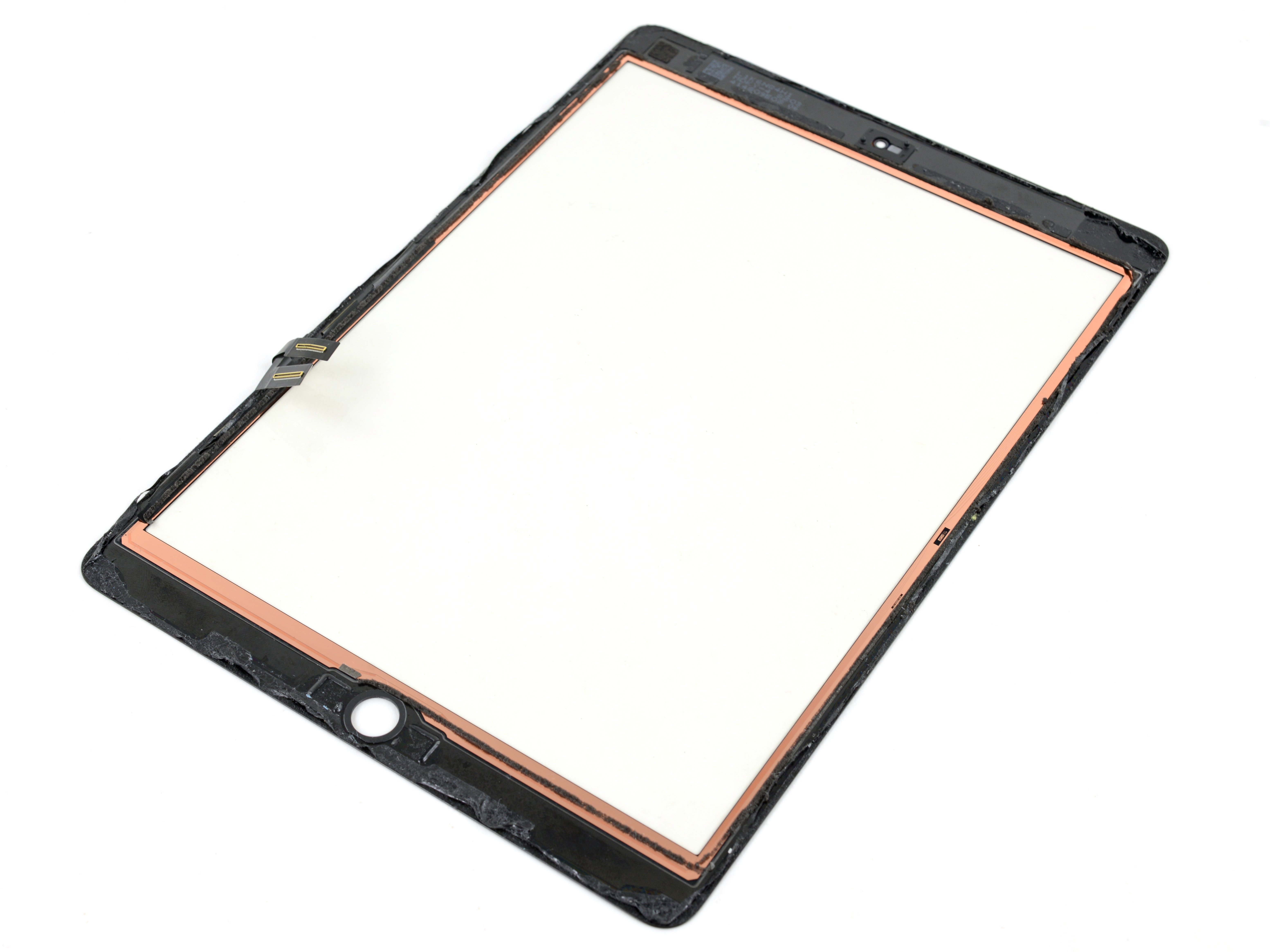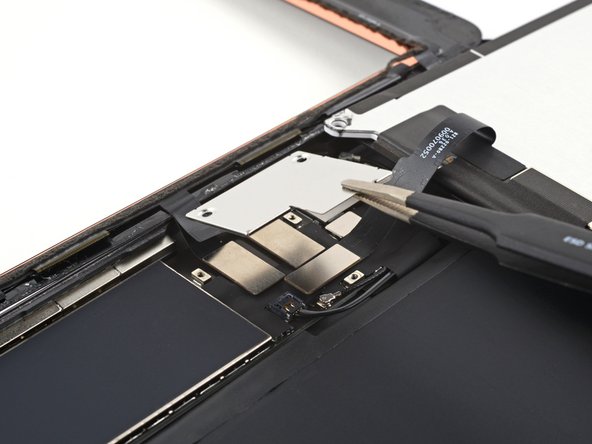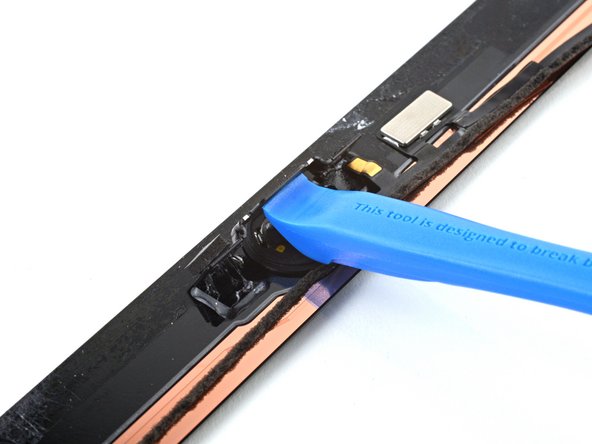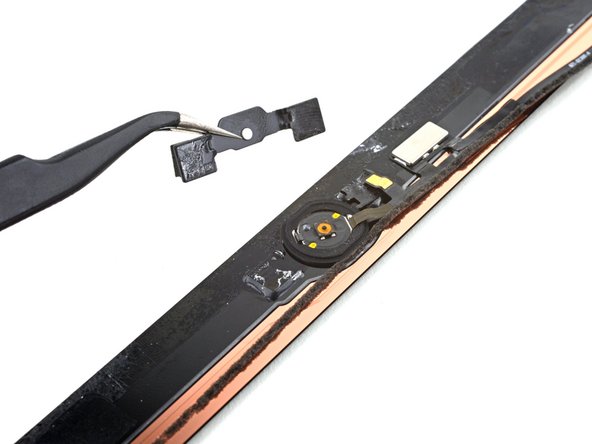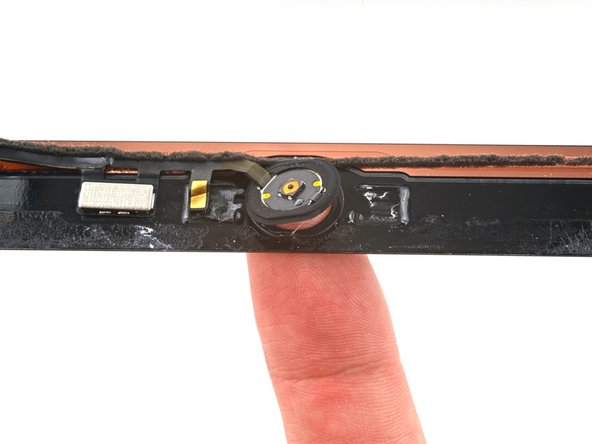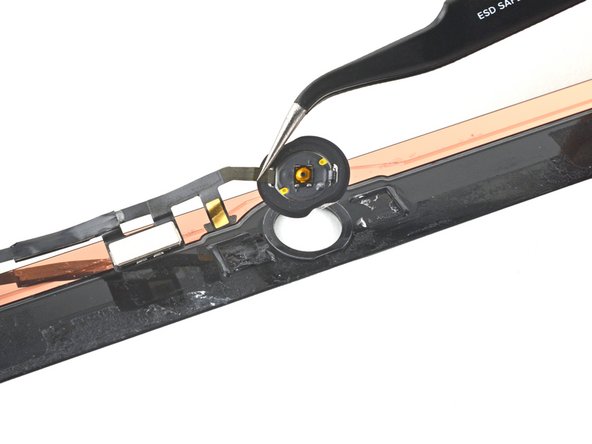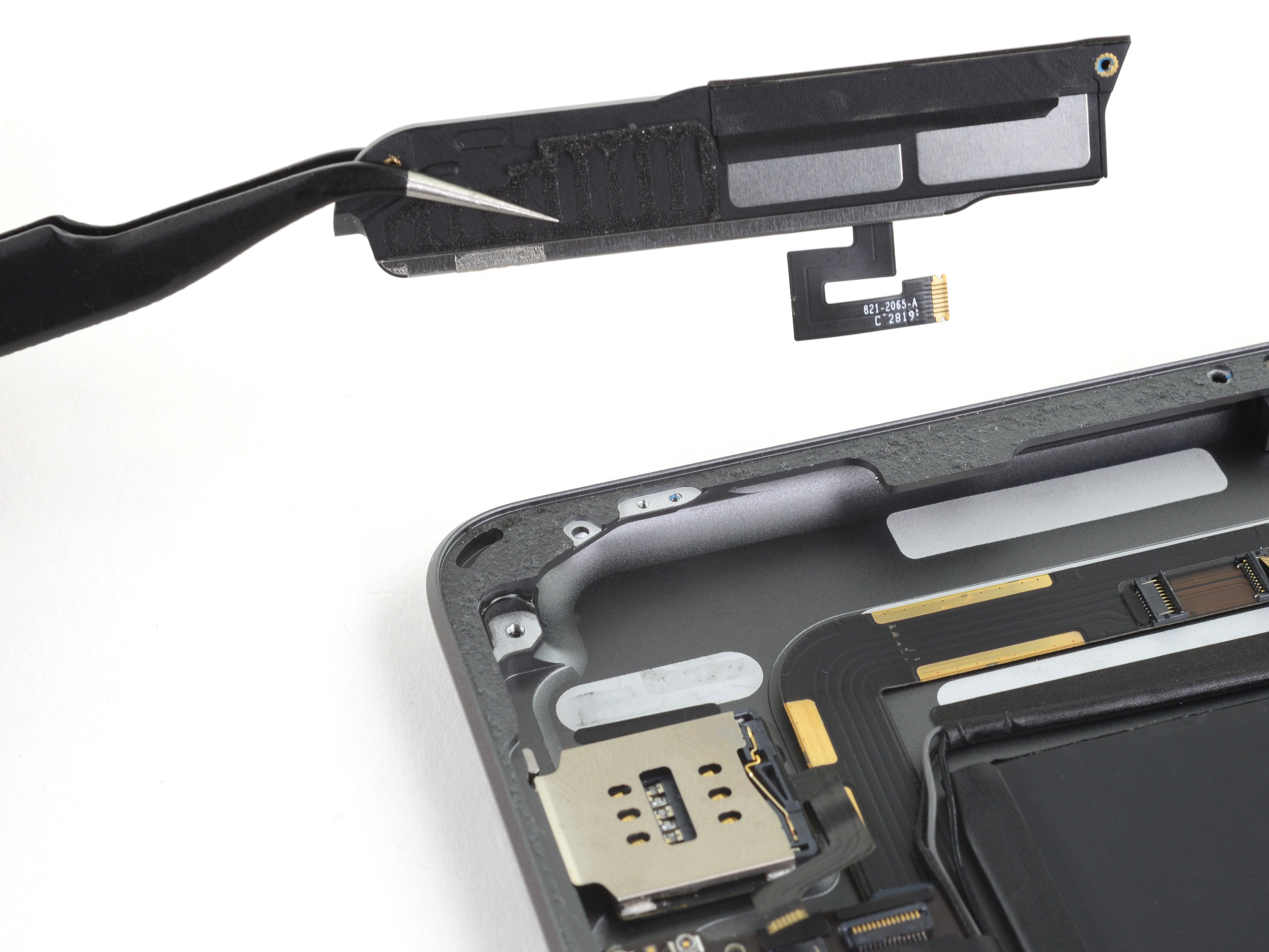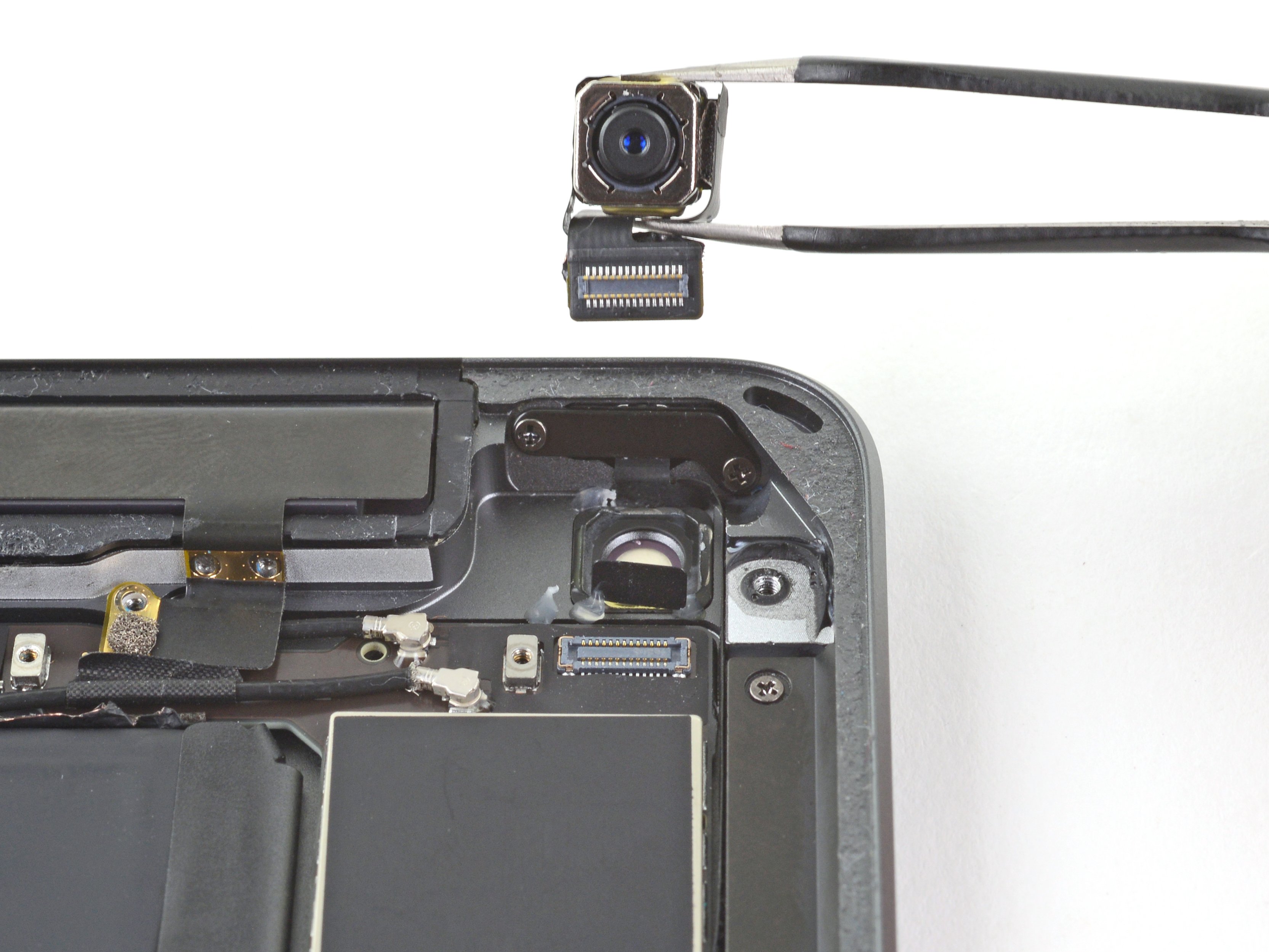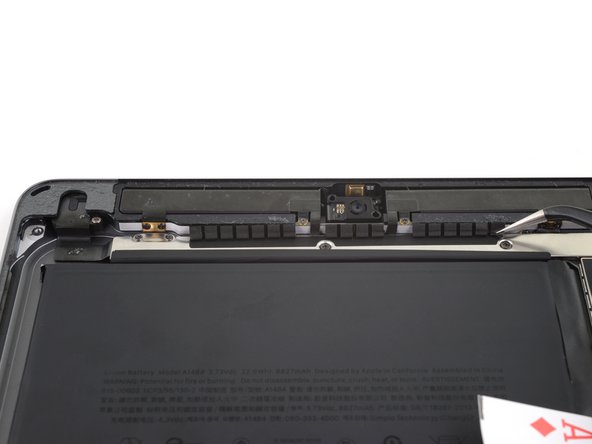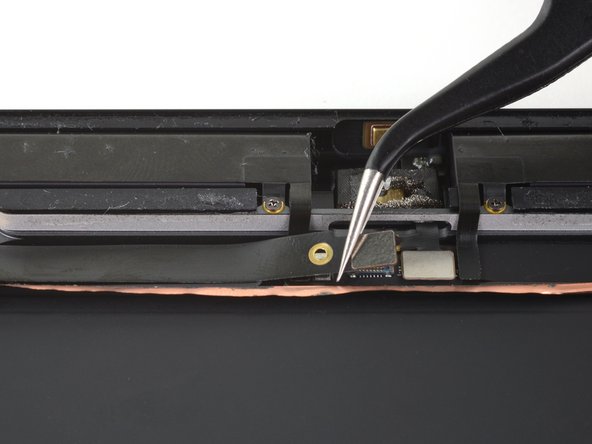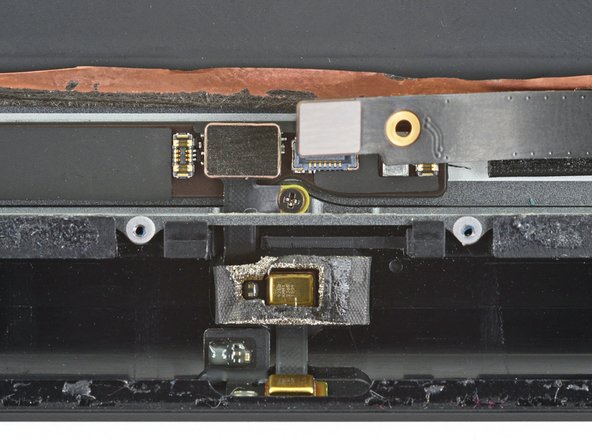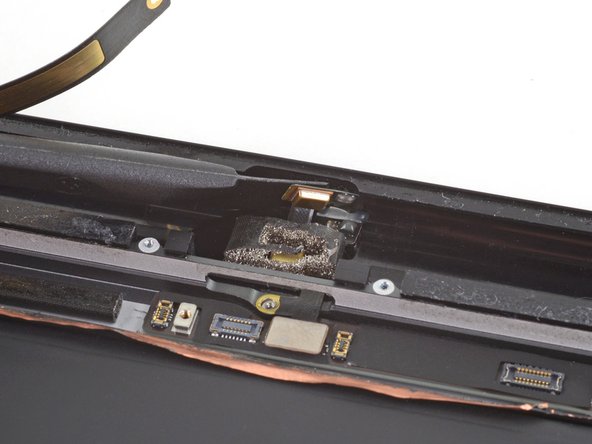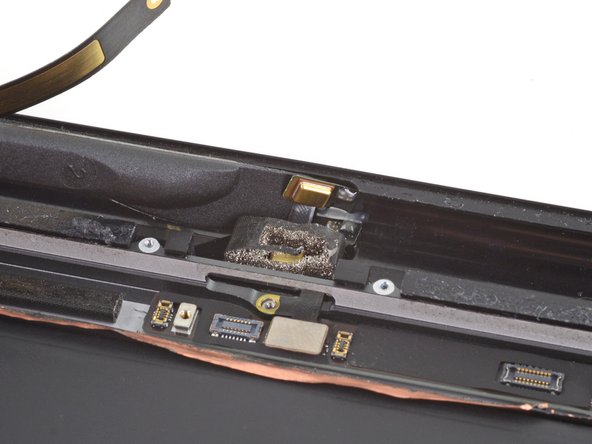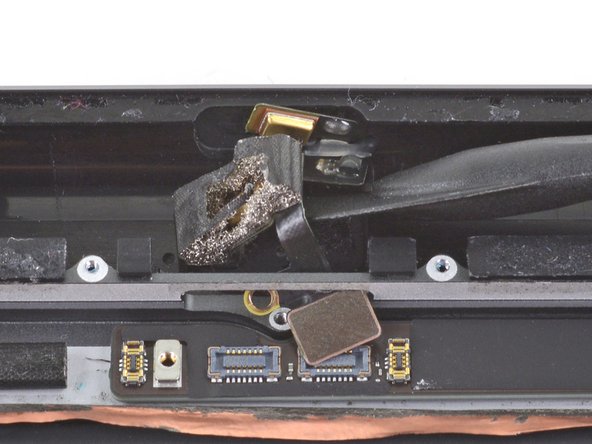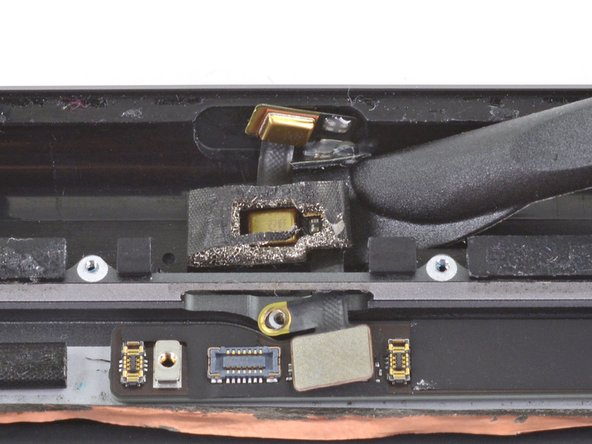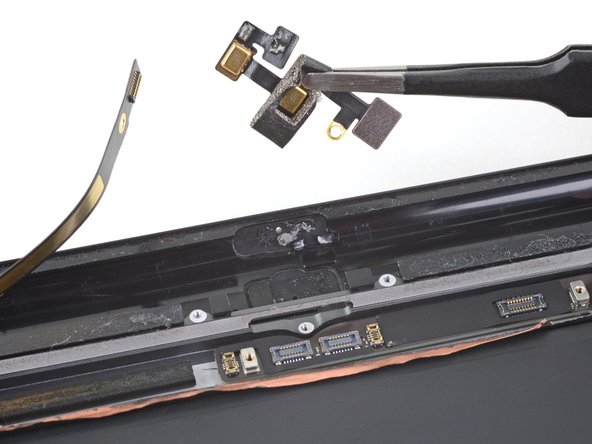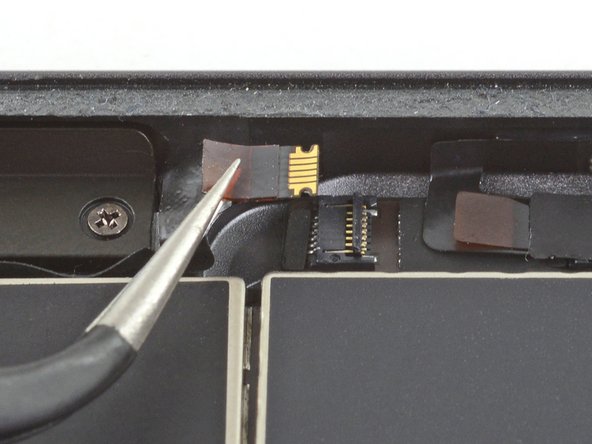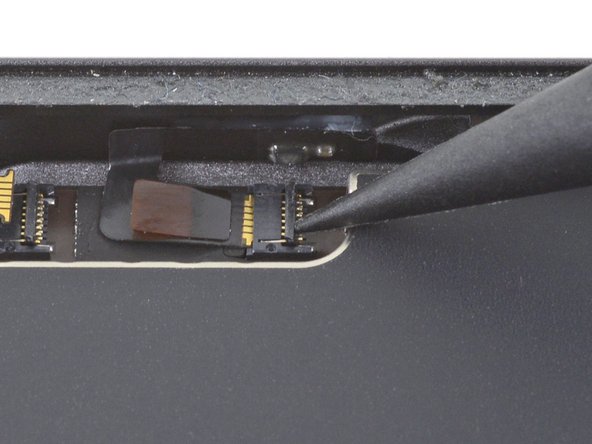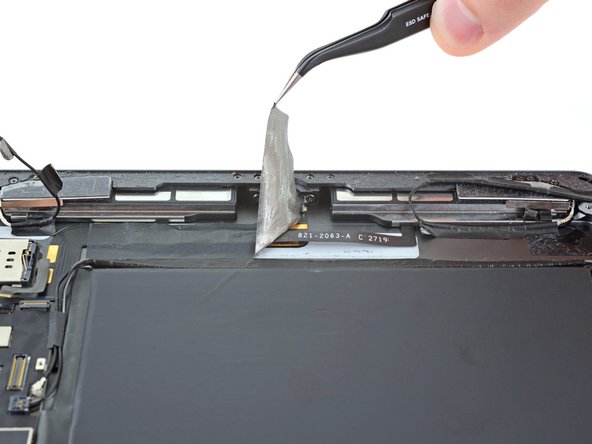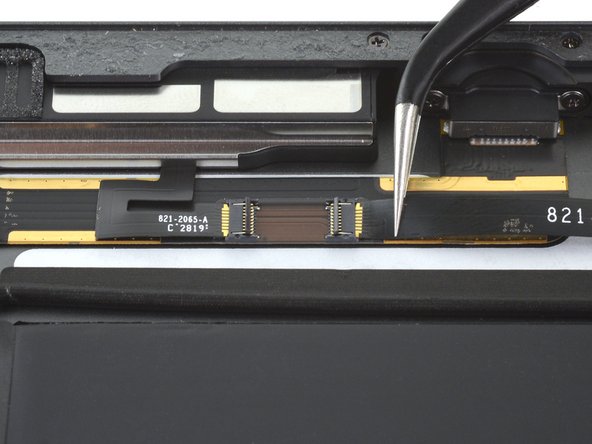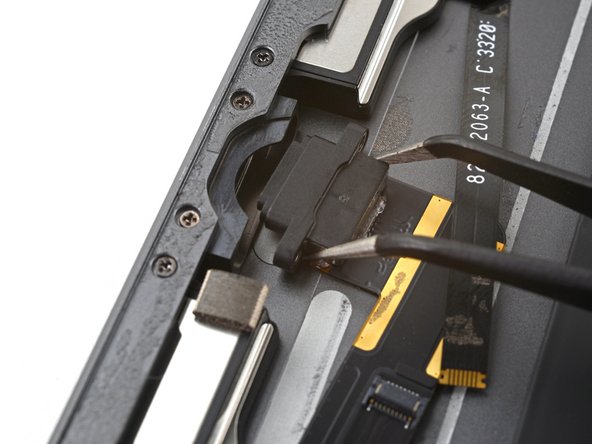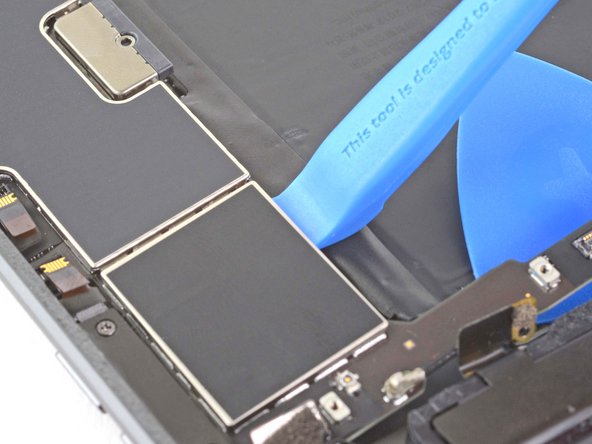Duration: 45 minutes
Steps: 54 Steps
Heads up! Make sure your iPad’s battery is below 25% before popping it open—safety first!
Ready to swap out that headphone jack on your iPad 8 Wi-Fi? Awesome! Just a heads up: this guide is tailored for the Wi-Fi model only. If you’ve got the LTE version, check out that guide instead. Before diving in, make sure your battery is under 25% charged. This little precaution helps keep things safe in case of any accidental mishaps during the repair. If your battery is looking a bit puffy, be sure to take the right precautions. When you’re isolating the battery with a blocker, handle it gently—those battery contacts can bend or break easily, and we definitely don’t want that! If you decide to skip isolating the battery, try to keep metal tools to a minimum, using them only when absolutely necessary (like when you’re taking out screws). This helps avoid shorting the battery and protects those delicate circuit components. And remember, some of the pics in this guide might show a different model, but don’t worry, they won’t mess with the steps. Let’s get started!
Step 1
– Grab that iOpener and give it a little warm-up! Stick it on the left edge of your device for a cozy two minutes. You’re doing great!
Tools Used
Step 2
– While the adhesive is doing its thing and loosening up, keep these sensitive spots in mind before you start prying:
– Front camera
– Antennas
– Display cables
Step 3
Next up, we’ll show you the Anti-Clamp in action – a nifty tool we created to help make this whole opening thing a breeze. If you’re not using the Anti-Clamp, don’t worry! Just skip ahead three steps for an alternative method.
Want the full scoop on how to use the Anti-Clamp? We’ve got you covered with this handy guide.
If your iPad is being a little too slippery for the Anti-Clamp to hold onto, grab some tape and stick it to the surface to give it some grip. Trust us, it’ll work wonders.
– Slide the blue handle back to release the Anti-Clamp’s arms.
– Prop up your iPad so it sits evenly between the suction cups.
– Place the suction cups near the center of the left side—one toward the top, the other near the bottom.
– Keep the bottom of the Anti-Clamp steady and press down firmly on the top cup to create a strong seal.
Step 4
– Slide the blue handle forward to lock those arms in place.
– Give the handle a full 360-degree turn clockwise, or keep going until the suction cups start to stretch a bit.
– Keep an eye on the suction cups to make sure they stay lined up. If they start to drift apart, just loosen them a little and realign the arms.
Step 5
Take it easy and don’t twist more than half a turn at once. Give it a minute between each turn—let the Anti-Clamp and time do their thing for you!
For a detailed walkthrough on wielding your trusty hair dryer like a pro, take a peek at this guide.
If the Anti-Clamp isn’t quite opening up enough space, crank up the heat a bit more and give that handle a clockwise twist for half a turn.
– Take a breather for a minute to let that adhesive loosen up and create a little opening for you.
– If your screen isn’t heating up like you’d hoped, grab a hair dryer and give that left edge of the iPad a gentle warm-up.
– Slide an opening pick under the digitizer once the Anti-Clamp gives you enough space to work with.
– Feel free to skip the next step.
Step 6
– After the screen feels warm to the touch, stick a suction handle onto the left edge, as close to the edge as you can get.
– Gently lift the screen using the suction handle to create a tiny gap between the digitizer and the frame.
– Slide an opening pick into the gap between the digitizer and the frame to begin separating them.
If your screen’s looking like it’s seen better days, you can try sticking some clear packing tape on it to give the suction cup a little extra grip. If that doesn’t work, you can go for some really strong tape in place of the suction cup. Worst case, grab some superglue and attach the suction cup directly to the broken screen. It’s a bit quirky, but it’ll do the trick!
Tools Used
Step 7
No stress if you spot the opening pick poking through the digitizer — just pull it out gently. The LCD screen should be fine, though there’s a chance you’ll leave a bit of stubborn adhesive behind that’ll need some TLC to clean up.
– Pop a second opening pick into the gap you just made.
– Gently slide that pick down toward the bottom-left corner to loosen up the adhesive.
– Keep the pick wedged in the bottom-left corner so the adhesive doesn’t sneak back together.
Step 8
– If the opening pick gets stuck in the adhesive, try ‘rolling’ the pick gently along the edge of the iPad to keep peeling that stubborn glue away.
Step 9
– Gently slide the first opening pick towards the top-left corner of the device to start separating the adhesive. Take it slow, we’re in no rush!
– Once you’ve got the pick in the top-left corner, leave it there to keep the adhesive from sticking back together. It’s like holding the door open so it doesn’t close on you.
Step 10
– Warm up an iOpener and place it on the top edge of your device for a solid two minutes. Let’s get that glue nice and toasty!
Tools Used
Step 11
– Gently twist the pick around the top-left corner of your device to break the adhesive seal. You’ve got this!
Step 12
Keep your pick away from the front camera lens to avoid any accidental damage. The next steps will guide you on how to do just that.
– Gently glide the opening pick along the top edge of your device, making sure to pause just before you hit the front camera. You’re doing great!
Step 13
– Gently slide the pick in until just the tip is between the digitizer and the frame—no rush, just a light touch.
– Now, carefully move the pick above the front camera to start breaking that adhesive seal.
– Keep the pick close to the right side of the front camera, then move on to the next step when you’re ready.
Step 14
– Pop the pick back in and slide it over to the top-right corner of your gadget to fully break free the top adhesive. You’re almost there!
– Keep that pick nestled in the top-right corner to keep the adhesive from getting cozy again.
Step 15
– Warm up an iOpener and stick it onto the right edge of your device for a solid two minutes to soften things up.
Tools Used
Step 16
– Give that pick a little spin around the top-right corner of your device to break free the adhesive. You’ve got this!
Step 17
The display cables hang out around the halfway mark from the bottom of the iPad. Just slide until you hit about three inches from the bottom—then stop! You’re doing great!
– Grab a fresh opening pick and gently slide it in until it reaches the middle of the iPad’s right edge.
Step 18
– Warm up your iOpener and gently press it onto the bottom edge of the device for about two minutes. Give it a little time to work its magic!
Tools Used
Step 19
Be careful not to rotate the pick too far around the corner; it could mess with the antenna. Take it slow and steady to keep everything safe and sound.
– Gently glide the bottom-left pick to the bottom-left corner to peel away that pesky adhesive.
– Keep the pick in its cozy spot at the bottom-left corner before you dive into the next step.
Step 20
Just a friendly reminder: slide that pick towards the home button, not away! We wouldn’t want to accidentally give the antenna a rough time.
If you find yourself needing to glide that pick over this area again, just lift it out and pop it back in at the bottom-left corner. You’ve got this!
– Gently slide a new opening pick into the little gap you’ve just made at the bottom edge of your iPad.
– Carefully glide the pick over the antenna, but remember to stop just shy of the home button.
– Now, let that pick chill to the left of the home button before you move on!
Step 21
Gently slide the pick no more than 1 mm in to keep the right antenna safe and sound.
– Pop an opening pick into the gap you’ve just made. Don’t worry, it’s easier than it sounds!
– Gently slide the pick underneath the home button, angling it toward the bottom-right corner. Just the tip should be between the digitizer and the frame, so be careful not to push too hard.
Step 22
Make sure to slide that pick gently toward the home button and steer clear of pushing it away. We wouldn’t want you to accidentally mess up the antenna—let’s keep everything running smoothly!
If you find yourself needing to glide the pick over this spot again, just pull it out and pop it back in at the bottom-right corner. Easy peasy!
– Grab the pick and gently slide it towards the home button to fully detach the bottom adhesive. Easy does it!
– Leave the pick right of the home button and move on when you’re ready to roll.
Step 23
– Warm up that iOpener and place it gently on the right edge of your device for a cool two minutes. Relax and let the heat work its magic.
Tools Used
Step 24
Take it easy with this step. Go slow, make sure the adhesive is nice and soft, and use your pick to carefully separate every bit of it. If you need to pause and reheat, go for it—patience is key.
If you’re feeling some resistance, no worries—just heat up the edges again and gently work your way along them with your trusty opening pick.
– Gently twist the two opening picks at the left corners of your iPad to give the digitizer a little lift, while also saying goodbye to the last bits of adhesive that are holding it in place.
Step 25
– Gently lift the left side of the digitizer upward to loosen the adhesive along the right edge of the iPad a bit more.
Step 26
– Gently support the digitizer and carefully slide an opening pick between the two display cables to help you break through the last bit of adhesive. Take it slow and steady – you’ve got this!
Step 27
– After you’ve successfully separated all that sticky adhesive, gently open the digitizer like a book and lay it down parallel to your iPad. We’re getting there!
– As you put everything back together, take a moment to clean off any leftover adhesive from the frame—and from the digitizer if it’s making a return appearance—using some isopropyl alcohol. When it’s time to seal the deal, replace the old adhesive with our handy adhesive strips or pre-cut adhesive cards.
– Keep an eye on those display cables during reassembly! Make sure they’re neatly tucked away under the LCD screen to avoid any mishaps. We want everything to fit just right!
Step 28
– Grab your Phillips screwdriver and carefully remove the four 4.3 mm screws holding the LCD to the frame.
– Keep track of every single screw as you go—each one needs to go back exactly where it came from to keep your device happy and safe.
– Make sure to peel away any tape covering the LCD screws so you can get to them without trouble.
Step 29
Hold your horses! Don’t try to completely yank out the LCD just yet—it’s still hanging on by a flex cable.
– Use the flat side of a spudger to gently lift the LCD just enough so you can get a good grip on it with your fingers.
– Flip the LCD like you’re turning a page in a book, lifting it near the camera and letting it roll over to the home button side of the frame.
– Place the LCD on a clean, soft, lint-free surface so you can easily access those display cables.
Tools Used
Step 30
– Grab your trusty Phillips screwdriver and carefully unscrew the 2.3mm-long screw holding the battery connector in place on the logic board. Once that’s done, you’re one step closer to getting things back in action!
Step 31
Check out these pics of the battery connector hidden beneath the logic board. Use them as your trusty guide while you carefully disconnect the battery.
Take note of those clever cantilever springs on the logic board that press snugly against the battery contact pads. Since both the logic board and battery are glued down tight, you’ll want to slide something slim and flexible in between those contact points to safely disconnect the battery.
Step 32
Handle that battery blocker with care! Those battery contacts can be a bit temperamental and might bend or break, leading to some serious trouble down the line. Let’s keep things smooth sailing!
Make sure the logo on the battery blocker is facing up. It’s like a little sign that says, ‘Hey, I’m in the right spot!’
Don’t force the battery blocker under the connector. If it’s giving you a hard time, try using a playing card to gently disconnect the battery instead.
The battery blocker or playing card should slide easily under the logic board. Once it’s in, it should rest at about a 15-degree angle—smooth and snug, no resistance!
– Gently slide the battery blocker under the logic board’s battery connector at about a 35-degree angle.
– Keep the battery blocker right there while you continue working.
Tools Used
Step 33
– Grab your trusty Phillips screwdriver and get ready to tackle those screws! Unscrew the three 1.4 mm-long screws that are holding the display cable bracket in place. You’ve got this!
Step 34
– Grab some tweezers or just use your fingers to gently lift off the display cable bracket. It’s a simple move, just take your time and be careful not to tug too hard.
Tools Used
Step 35
– Grab your trusty spudger and gently slide the flat end under the LCD cable connector to pop it loose. Take your time, no rush!
– When it’s time to reconnect, start by aligning one side and giving it a gentle press until you hear that satisfying click. Then, repeat for the other side.
– Avoid pressing down on the middle. If the connector’s not lined up just right, the pins could bend, and that’s a one-way ticket to trouble. Stay patient!
Tools Used
Step 36
– Carefully lift the LCD off completely and lay it face down on a clean, soft, lint-free surface to keep it safe and sound.
Step 37
– Grab a pair of tweezers and gently peel off the tape that’s protecting the home button cable ZIF connector. Take it slow, and you’ll be just fine.
Tools Used
Step 38
– Grab a spudger, an opening tool, or even your fingernail, and gently flip up the tiny hinged locking flap on the home button cable ZIF connector. Easy does it!
Tools Used
Step 39
– Grab your tweezers and gently wiggle the home button ribbon cable straight out of the ZIF connector.
Tools Used
Step 40
Be gentle and only pry on the connectors themselves—avoid levering the socket on the logic board to keep your iPad safe and sound.
– Gently slide the flat end of your spudger under the two digitizer cable press connectors to carefully pry them up and disconnect.
Tools Used
Step 41
Watch out for the home button ribbon cable—treat it gently and avoid any poking or tearing!
– Grab the flat end of your spudger and gently work your way under the vibration isolator in the bottom-right corner. Don’t rush, take your time!
– Carefully lift and remove the vibration isolator. It should come off easily once you’ve got it loose.
Tools Used
Step 42
The home button cable is held in place with a light touch of sticky tape.
– Grab a trusty pair of tweezers and gently lift that home button cable away from the frame. You’ve got this!
Tools Used
Step 43
Grab an opening pick and gently slice through any sticky leftover adhesive still holding the front panel assembly to the frame.
Keep in mind, without the right insulation, parts of the digitizer might short out against other components, which can mess with your touch input.
This insulation is sneaky—it’s invisible to the naked eye and not the same as the foam dust barrier strips you see on many iPads.
– Step one: Remove the front panel assembly. This is your first move to get the ball rolling.
– Having issues with ‘ghost’ or ‘phantom’ touch inputs on your new screen? No worries! A super thin layer of insulating tape (Kapton tape works like a charm) on the highlighted areas at the back of the panel should do the trick. Most replacement screens come with the right insulation, so you might not even need this step, but it’s good to know just in case.
– When you’re getting ready to put things back together, make sure to clean off any old adhesive from the iPad. Grab some high-concentration isopropyl alcohol (90% or more) and a lint-free cloth, and give those glued areas a good clean. This ensures the new adhesive will stick like glue (literally).
– Once that’s done, give the iPad a quick function test to make sure everything’s working as it should. Then, apply the pre-cut adhesive strips to the back of the display using the guide for display adhesive application. Now you’re ready to seal it up tight!
Step 44
– Grab your Phillips screwdriver and carefully take out the three 1.4 mm screws holding down the upper component bracket.
Step 45
– Grab some tweezers or your fingers and gently lift that upper component bracket right off the frame. You’ve got this!
Tools Used
Step 46
– Gently slide the flat end of your trusty spudger under the front camera cable press connector and give it a little lift to disconnect it. You’re doing great!
Tools Used
Step 47
The front camera shell is gently stuck to the frame, so take it easy when lifting it off.
– Slide an opening pick gently between the front camera shell and the frame.
Step 48
– Gently glide your pick around the edge of the camera shell to loosen the sticky adhesive holding it in place.
Step 49
– Gently slide in the opening pick to pop off the front camera shell from the frame. You’ve got this!
– Now, go ahead and lift off that front camera shell. Easy peasy!
Step 50
The front camera is cozying up to the microphone assembly, all snuggled in with some trusty adhesive.
– Slide a spudger gently between the front camera and the microphone assembly.
– Carefully pry up to loosen the sticky adhesive holding the front camera in place.
– Lift out the front camera and set it aside.
Tools Used
Step 51
– Gently use the flat end of the spudger to lift and disconnect the headphone jack’s press connector. You’ve got this!
Tools Used
Step 52
The headphone jack cable is gently stuck to the frame, so take your time peeling it off without rushing.
– Gently lift the headphone jack cable from the frame using tweezers or your fingers—easy does it!
Tools Used
Step 53
– Grab your trusty Phillips screwdriver and let’s tackle that 4.2 mm-long screw holding the headphone jack snugly in the frame. Time to get that jack free!
Step 54
– Now that you’ve successfully put everything back together, just retrace your steps in reverse. Easy peasy!
– Have some e-waste that needs a new home? Make sure to drop it off at an R2 or e-Stewards certified recycler. It’s the responsible thing to do!
– If things didn’t go quite as smoothly as you hoped, don’t sweat it! Give some basic troubleshooting a whirl, or pop into our iPad 8 Answers community for some friendly advice.
–
Tools Used
Success!





























































































